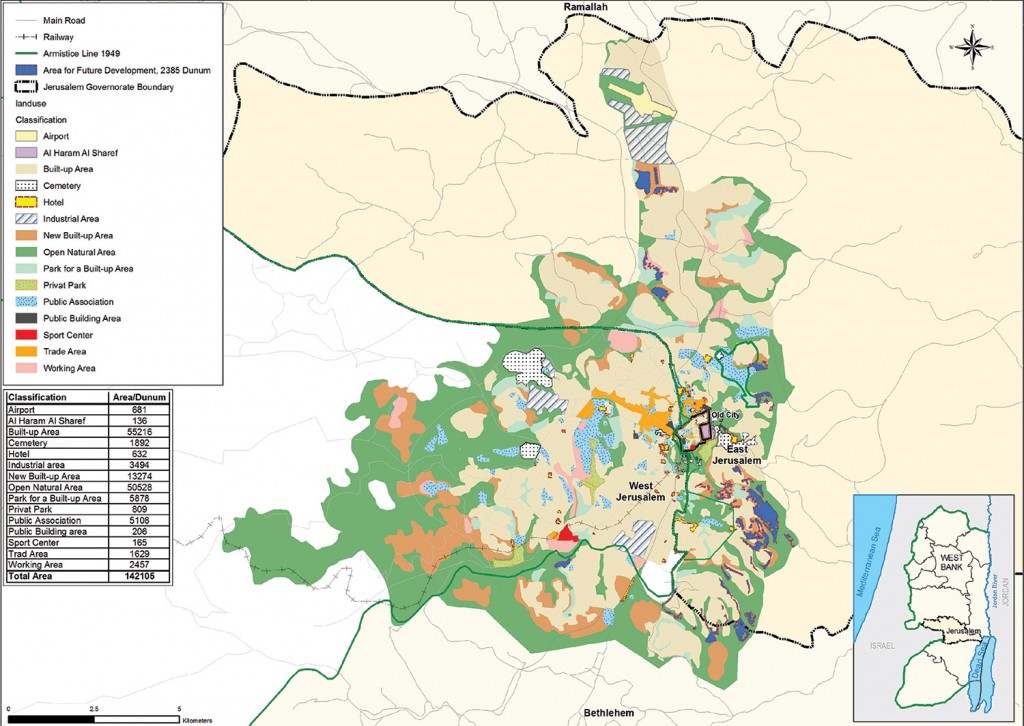For twenty years, Israel has been preparing a master plan 2020,i involving more than 250 town planners, strategists, and other professionals from all over the country and abroad. Its major objective is demographic: keeping the Arab population in (East) Jerusalem under 28%, as currently it is exceeding 30% and, if nothing is done, very soon this number will be touching 40%.The planners had to use an “equal” strategy in both sectors of the city, but also find ways to keep their goals; thus, heavy regulations were imposed on development of the eastern sector.
In this new master plan, new areas were rezoned from green to housing zones, which mostly happened in the western sector, but also undesignated areas of East Jerusalem were converted into National Parks, such as Khalet al-Ain and al-Eissawiyyeh.
While the bylaws of this plan theoretically allow for more building rights, these are difficult to achieve, and new regulations are stalling future development and projects. One precondition for approval is to give up 40% of the land for public use – and where that is not feasible, the municipality retains ownership of the ground floor – which is almost impossible to fulfill and has left most projects frozen. Another prerequisite is that the rights of building on lands larger than 10,000 sq m must be upgraded (higher taxes), which is found in Jerusalem only in very few cases, mostly in lands owned by churches.
The areas in brown denote newly built settlement housing units that are being constructed in and around the Old City of Jerusalem to form an inner ring in the so-called Holy Basin, a densely populated Palestinian area, as well as an outer ring around the whole of East Jerusalem.ii The areas in purple include an area set aside for future Palestinian housing in the north of Beit Hanina and for Palestinian industry south of the Kalandia airport. However, increased road and betterment taxes (imposed based on the added value of land that has been built up) and the increased cost of obtaining a license (multiplied several times and exceeding 30,000$ for each apartment in most cases) make profitable housing projects unworthy.
Map courtesy of ARIJ. Caption by Simon Kouba, architect
and city planner.
i. In fact, the plan has never been officially approved and is used or disregarded at will.
ii. Faisal Husseini Foundation, Israeli Settlement Activity in and around the Old City, http://www.fhfpal.org/mis/mis/oldcity.htm


